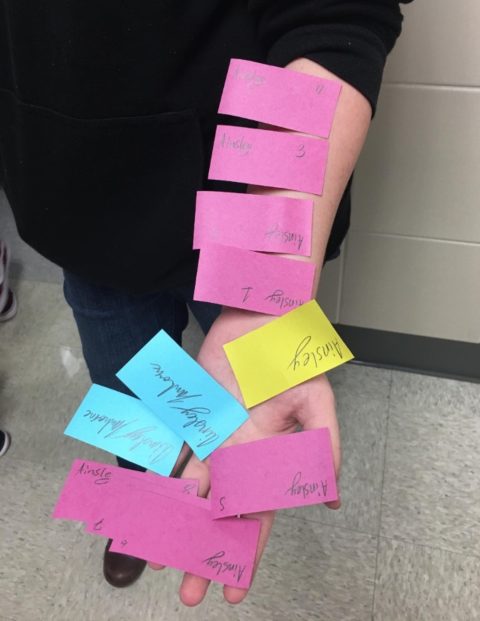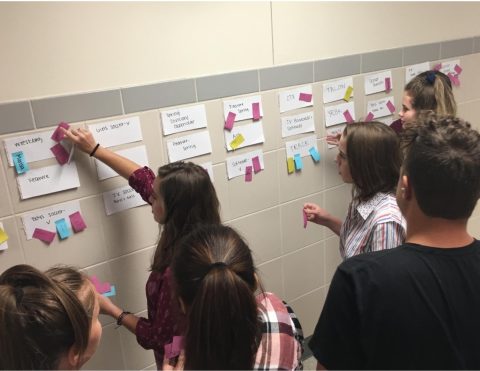Assigning spreads to your staff and keeping them happy and motivated with them doesn’t have to feel like a chore. Make the most of the occasion with a fun Draft Day activity that can be implemented for each deadline, each season, each semester or once a year.
Draft Day picks get students engaged and invested, and the process flows smoothly without much extra effort. Hosting Draft Day acts as a perfect National Yearbook Week celebration, and former award-winning Timber Creek High School adviser Kathy Beers, now an area associate representative and InDesign specialist for Walsworth, used it with her students to drum up excitement. She explained how the process works.
The Energy Matters
Beers made sure the event to be one kids anticipated, cultivating it into a time-honored tradition.
“We planned it in advance. The veterans knew what it was. We played NFL hype music and encouraged students to wear their favorite jerseys. You could even bring tailgate food,” Beers said, explaining what they did to create a draft day atmosphere in the classroom.
She recommends assigning spreads by season to allow for equal distribution and account for students with seasonal commitments, like fall marching band. The goal is for students to come out enthusiastic about their upcoming spreads, not stressed about how to balance everything.
 The Process Explained
The Process Explained
Beers made notecards for every known spread subject and taped them to a wall or whiteboard, sometimes even moving to the hallway to guarantee they had enough room for students to walk around and read each card.
They received three different colored sticky notes. While the amount of sticky notes may vary based upon your book’s page count, number of staff and how many times a year you host Draft Day, Beers gave each student 11 sticky notes, which they had to write their names on.
- 2 blue YES, PLEASE notes, indicating these were their top picks that they felt the most strongly about
- 8 pink SURE notes, indicating they were interested or willing to take that spread
- 1 yellow NO WAY notes, indicating they absolutely did not want to work on that spread.
Beers set a timer and gave her staff 10 minutes to make their Draft Day picks, then she took photos of every card before taking them down. She used this system to determine spread assignments.
“It helped because even the new kids had a say, and they felt that it was fair because everybody got the same number of yeses and no’s,” Beers said.
Depending on student interest, some spreads had partner pairings to work on them together to accommodate spreads with high levels of interest, but she limited it to no more than two students.
While overlap happened, Beers found students generally came out happy with their assignments. They knew going in that the only guarantee to not be assigned a spread was to use their “No Way” sticky note and that she would always try to assign at least a few of their top picks. However, she did not make the assignments. She handed that task to her editors and then reviewed what they came up with before posting for the staff. That lightened her workload and allowed editors to take ownership of the project.
“It worked really well, and we never had a complaint. It was a good way to spread the workload for each staffer throughout the deadline.”
So, if you’re looking for a new way to distribute spread assignments, consider a Draft Day party!





